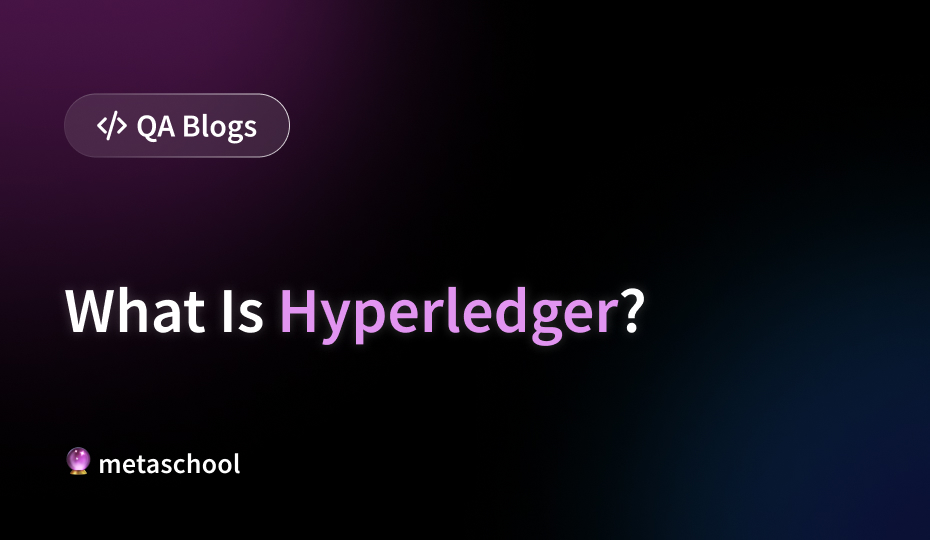Table of Contents
Imagine a world where different companies can work together to build the future of blockchain technology, putting aside competition for the greater good. That’s the core idea behind Hyperledger – an open-source project hosted by The Linux Foundation that fosters collaboration between various organizations to develop enterprise-grade blockchain frameworks and tools.
Think of it as a giant kitchen where leading chefs (companies) from all walks of life come together to create a diverse smorgasbord of blockchain solutions. Each chef brings their unique expertise, but the goal is to create a feast that benefits everyone.
Here’s a deeper dive into what it is and how it contributes to the blockchain landscape:
What Makes it Different?
Unlike some blockchain platforms like Ethereum or Bitcoin, Hyperledger isn’t a single blockchain network. Instead, it’s an umbrella project that offers a variety of open-source frameworks and tools designed specifically for enterprise use cases. Here are some key characteristics that set it apart:
- Permissioned Networks: Many Hyperledger frameworks focus on permissioned blockchains, where participants are known and pre-approved. This provides a more controlled environment ideal for businesses that require stricter access control and privacy.
- Modular Design: These projects are designed with modularity in mind. This allows businesses to choose the specific tools and frameworks that best suit their needs, creating a customized blockchain solution.
- Focus on Enterprise Needs: These projects address specific challenges faced by businesses in various industries, such as supply chain management, trade finance, and identity management.
🔥 Check this course out: Build a One Piece Personality dApp With Solidity
Popular Hyperledger Frameworks
Here are some of the most prominent frameworks under the Hyperledger umbrella:
- Hyperledger Fabric: A popular modular framework for building private, permissioned blockchains. It’s known for its flexibility and scalability, making it suitable for a wide range of use cases.
- Hyperledger Sawtooth: Designed for high-performance and scalability, Sawtooth is ideal for applications that require fast transaction processing and a large number of participants.
- Hyperledger Iroha: Focuses on ease of use and developer experience. Iroha is a good choice for businesses that want a quick and easy way to get started with blockchain development.
Who’s Involved in Hyperledger?
This project boasts a vast and diverse community. Here are some of the key players:
- The Linux Foundation: Provides the infrastructure and governance framework for Hyperledger, fostering collaboration and ensuring the project’s long-term sustainability.
- Member Companies: A consortium of leading technology companies, financial institutions, startups, and academic institutions actively contributes to the development and adoption of Hyperledger frameworks.
- Developers and Users: A global community of developers and businesses leverage and contribute to Hyperledger projects, shaping the future of blockchain technology.
Benefits of Using Hyperledger
Here are some of the advantages of using Hyperledger frameworks for your enterprise blockchain projects:
- Open Source and Collaborative: Being open-source allows for transparency, community-driven development, and continuous improvement.
- Permissioned Networks: Provide greater control and privacy compared to public blockchains.
- Modular Design: Enables businesses to build custom solutions tailored to their specific needs.
- Focus on Enterprise Needs: These projects address challenges relevant to various industries.
🔥 Check this course out: Build a Semi-Fungible ERC404 Tokens’ Marketplace
Conclusion
Hyperledger is constantly evolving, with new frameworks and tools emerging to address the ever-growing needs of the blockchain industry. As the technology matures and adoption grows, we can expect it to play a crucial role in enabling secure, efficient, and scalable blockchain solutions across various sectors.
Remember: Ir is not a single platform, but a collaborative effort to build a diverse ecosystem of enterprise-grade blockchain tools. By leveraging its open-source nature, modular design, and focus on enterprise needs, Hyperledger paves the way for a future where blockchain technology can truly transform businesses around the world.
Try it out, ask us questions, and let us know how it went by tagging Metaschool on Social Media.
Follow us on –
🔮Twitter – https://twitter.com/0xmetaschool
🔗LinkedIn – https://www.linkedin.com/company/0xmetaschool/
